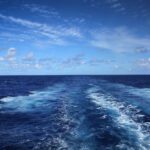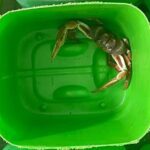Where you find a fish, you also find a fish’s habitat.
You can find rockfish among British Columbia’s kelp forests. You can find speckled lake trout cruising in the expansive Laurentian Great Lakes. You can find masses of spawning capelin along Newfoundland’s pebbled shorelines. You can find Arctic grayling in Yukon’s frigid rivers and Arctic cod in the Northwest Passages.
If a fish’s habitat is destroyed, will you still find the fish?
The Fisheries Act has protected Canada’s fishes and managed Canadian fisheries since its enactment in 1868. It wasn’t until over a century later in the 1970s that the Act legally protected fish habitat and prevented aquatic pollution, stating that “No person shall carry on any work or undertaking that results in the harmful alteration, disruption or destruction of fish habitat.” Those familiar with the Act referred to this statement under Section 35 as the prohibition against HADD. Projects deemed as posing a “medium” or “high risk” to fish habitat had to be authorized by the Department of Fisheries and Oceans Canada (DFO).
Harmful alteration to the Act
In 2012 amendments to the Fisheries Act were announced by the Conservative government. The Act currently states “No person shall carry on any work, undertaking or activity that results in serious harm to fish that are part of a commercial, recreational or Aboriginal fishery, or to fish that support such a fishery.” The Act defines serious harm as the “death of fish or any permanent alteration to, or destruction of, fish habitat.”
Perhaps when you quickly skim the revised statements there doesn’t appear to be anything worth worrying over. But scientists, environmental lawyers, Indigenous communities, former Fisheries Ministers, and other natural resource stakeholders denounced the changes. Concern that fish habitat would once again be unprotected was palpable. The Conservative government explained the changes were to balance “environmental and economic realities”, reduce “unnecessary, ineffective and burdensome procedures,” and ensure the Act does not “go beyond…intended conservation goals.”
The absence of a “factual discussion and a broad consultation process”, vague wording (e.g., what does “permanent alteration” mean?), and unsubstantiated reasons for the changes were among the opponents’ criticisms. How could the government conclude the former Act exceeded what was required to protect fish habitat in the absence of adequate monitoring and assessmentof Canada’s fish habitat?
A discussion on fish habitat
In 2015 the Liberal Party of Canada came into power. By then there were quantifiable changes pre- and post-amendment with regard to enforcement of the Act and the number of projects DFO authorized; enforcement was curtailed and the number of authorizations had decreased, most likely as a result of perceptions that the Act no longer applied as broadly as it once did (e.g., that it only applied to certain fishes and no longer prohibited non-permanent alterations). Near the end of 2016 a review of the Act was carried out by the Standing Committee on Fisheries and Oceans (FOPO) with assurances from the Liberal government to “restore lost protections, and incorporate modern safeguards.”
Brett Favaro and Martin Olszynski met while both appearing as witnesses during the review. Favaro is a fisheries scientist at Memorial University’s Marine Institute and spoke on the ecological impacts of changes to Section 35 and the prohibition against HADD. Olszynski, an Assistant Professor in the University of Calgary’s Faculty of Law and former lawyer in DFO’s legal services unit, gave an overview of the implementation of Section 35 over the last 15 years.
The same question was asked of Favaro and Olszynski; what harm to fish habitat came about because of the changes to the Fisheries Act?
Both argued not enough time had passed to answer this question in a biologically meaningful way. An earlier study by Olszynski also found that, in comparison to authorizations under the previous HADD regime, authorizations issued during and after the transition to the amended regime were half as likely to require any form of habitat compensation or offsets (i.e., new habitat created to replace the altered habitat). This procedural distinction precluded any meaningful comparison of habitat loss between the former and amended regime. Also, to answer the question posed to Favaro and Olszynski the harm that was done before the changes needed to be quantified. “If harm was being done before and the law was weakened, then there is no way harm isn’t being done after the changes,” reasoned Favaro.
By the numbers
Using data on habitat impacts (i.e., HADD) and habitat compensation authorized by DFO in a six-month period under the former Act, Favaro and Olszynski quantified a net loss of over 2 million m2 of fish habitat. This loss of habitat was calculated assuming perfect compliance of habitat compensation requirements. The net loss of habitat jumped to almost 4 million m2 when only 80% of required habitat compensation occurred.
An overall loss of fish habitat suggests effectiveness of policies should have been enhanced not reduced; the former Act did not go beyond conservation goals (e.g., no net loss of habitat) as the goals were not even being met. If the HADD regime as previously set out in the Fisheries Act was not adequately protecting habitat why change what the law says? Why change the rigor of how projects causing harm are reviewed? Favaro and Olszynski contended the language of the former Act (i.e., inclusion of HADD) should be reinstated and that future amendments be informed by data accessible to all stakeholders. The authors obtained data for the study through the Access to Information Act and recommended a public registry of DFO authorizations be created. Favaro and Olszynski published their findings earlier this year in the Canadian Journal of Fisheries and Aquatic Sciences (CJFAS) and submitted them to FOPO.
Restoring Canada’s environmental protection
At the end of February FOPO released its report based on over 200 briefs and the testimonies of 50 witnesses. Thirty-two recommendations were put forth and much to the excitement of Favaro several aligned with those in the CJFAS paper. “It’s not every day that you see this!” Favaro shared. The first recommendation in the report was to restore the definition of HADD to Section 35 of the Act; this was Favaro and Olszynski’s first call to action. Another FOPO recommendation that was also recommended by Favaro and Olszynski was for DFO to invest in the establishment of a registry of all authorizations and habitat monitoring efforts. This recommendation and the recommendation to take an ecosystem approach to fish habitat protection are “cornerstones of any effective future habitat protection regime,” says Olszynski. The report overall seems promising although Olszynski notes that “the Committee fails to recommend that these concepts be explicitly incorporated into the Act.” Which, if any, recommendations will be adopted into the Fisheries Act has yet to be determined. In late March, the 2017 federal budget announced over $100 million in funding “to develop water protection measures in co-operation with provincial, territorial and Indigenous partners.” One hopes the report’s recommendations and support from federal funding translates into strengthened fish habitat protection and formal assessments of protection efforts.
Favaro describes fish habitat as a “conveyor belt of services that brings wealth into communities.” Fish habitat is required for all the fish species integral to Canada’s culture and economy. Instilling the value of fish habitat with the public is the final recommendation in Favaro and Olszynski’s paper. A public empowered with knowledge on the importance of fish habitat can make educated decisions when considering the impact on fish habitat by projects big and small, from construction of a hydroelectric dam to building a dock at a cottage.
Favaro recalled the 2012 return of salmon to Still Creek after 80 years. The restored spawning habitat is located smack dab in the metropolis of Vancouver, British Columbia. Surrounded by office buildings and a Canadian Tire, human activity was clearly not hindered because of the fish habitat or laws protecting it. But, the merits of local stewardship were exemplified by the “miraculous” return of a fish to its rehabilitated home in the wild.




